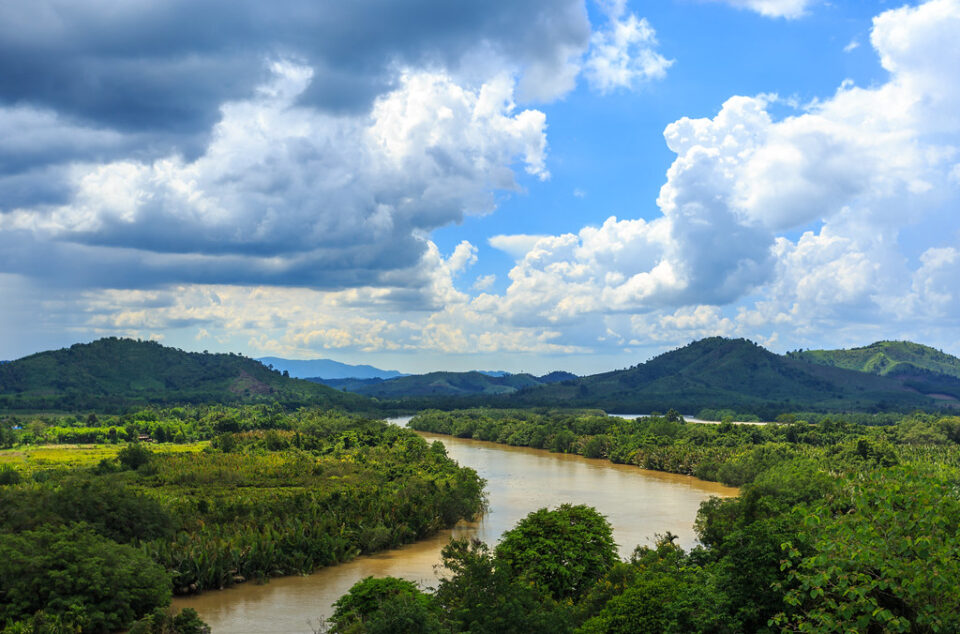Though it still has significant obstacles, analysts say Thailand’s plan to construct a 90 km land bridge over its southern area, which might allow shipping trade to circumvent Malaysia and Singapore, is on paper simpler than the Kra Canal.
These include the project’s potential location in a hilly area, the multibillion dollar construction cost, and security issues in Thailand’s volatile south.
Analysts have also cautioned that, if the Thai land bridge proposal is not well managed, it could fail due to the long-established shipping facilities and activities in the Straits of Malacca.
However, the initiative is anticipated to draw foreign investors and transform Thailand into a thriving production hub, according to Thai Prime Minister Srettha Thavisin.
He added during the Thailand-China Investment Forum in Beijing on Thursday (Oct. 19) that “this will be a global mega-project, which will shorten the duration of goods transport via the channel of the Malacca Strait by six to nine days.”
In addition, Mr. Srettha said that Thailand is prepared to accept Chinese investors to aid in the nation’s development and pledged to make it easier to conduct business there in the future.
A NEW TRADE TRAIL JOINS THE PACIFIC AND INDIAN OCEANS
The land bridge project aims to open up a brand-new commercial route between the Pacific and Indian Oceans. On Thailand’s eastern and western coasts, there will be two deep sea ports as well as a rail and road network connecting them.
The eastern port will be in the Gulf of Thailand’s Chumphon province, and the western port will be in the Andaman Sea’s Ranong province. Mr. Srettha estimates the price to be US$35.6 billion.
The project, according to Assoc Prof Antonio L Rappa from the School of Business at the Singapore University of Social Sciences, is “simply too expensive,” and he issued a warning that the separatist movement in Thailand’s unrest-ridden south as well as the project’s location’s mountainous terrain could have an impact on the construction.
However, Dr. Rappa told CNA that “it will significantly affect Singapore at least 50 years from now” if it is successfully developed.
Gen Prayut Chan-o-cha’s former administration, which aimed to improve Thailand’s transportation network and make it an Asian logistics hub, also looked at the land bridge project.
THE LAND BRIDGE AND ITS FOREIGN SUCCESSOR, THE KRA CANAL
It is not a novel concept to link the Andaman Sea and the Gulf of Thailand to establish a new marine route.
The Kra Isthmus, the narrowest portion of the Malay Peninsula, was excavated at Ranong and Chumphon in the 17th century, according to historical records.
Numerous administrations have tried and failed for years to construct the so-called Kra Canal.
The intended excavation has been hampered, in the opinion of Dr. Yuttaporn Issarachai, a political scientist from Sukhothai Thammathirat Open University, by internal politics, worries about its effects on the environment, as well as internal security.
He claimed that although if the land bridge project does not entail a canal, it is a concept that is somewhat comparable and may encounter many difficulties, such as geopolitical problems.
He emphasized that a number of nations, including China, Vietnam, and the Philippines, are involved in maritime territorial disputes, and that Thailand could be impacted by the construction of a new maritime route close to the disputed area.
It won’t be simple, the doctor said to CNA. “It might provoke Thailand into South China Sea territorial conflicts. We must not overlook the significant economic benefits and political stability that maritime shipping routes bring to the region.
The Faculty of Syariah and Law at Universiti Sains Islam Malaysia’s Dr. Mohd Hazmi Mohd Rusli asserted that the land bridge project could succeed “if China as the main stakeholder is adamant to invest.”
He continued that a land bridge would be more practical than a canal because it wouldn’t require cutting through the Kra Isthmus.
“The Suez or Panama Canals can save thousands of miles off a journey. However, the Kra Canal, which is the projected Thai Canal, could only save a few hundred miles, the man stated.
IMPACT ON SINGAPORE IS Unlikely
The land bridge project’s first phase is anticipated to be finished in 2030, with ultimate completion slated for 2039.
Dr. Yuttaporn compared it to the planned excavation of the Kra Canal and said the land bridge might allay public worries about separatist operations in southern Thailand.
People worry that the canal will divide Thailand into two sections, which could strengthen the separatist movement in the unresting south, he said.
This is a land bridge, though. All they’ll do is construct an expressway across instead of digging a canal.
According to local media sources, Interior Minister Anutin Charnvirakul supported the initiative on Thursday and stated that its construction was simpler than dredging the Kra Canal.
He allegedly said that because the land bridge will join two coasts together rather than dividing it, the project won’t have an impact on internal security.
Analysts disagree on whether shipping companies would choose to use the land bridge. This is because it would need more time and money for ships to dock at either the Ranong or Chumphon port and then have their cargo carried between the two by land.
Dr. Rusli thinks Thailand will need to provide its ports with suitable amenities on both coasts in order to draw in potential customers, as the majority of ships would choose to take the traditional Straits of Malacca and Singapore route.
“Mariners are accustomed to using the Straits of Malacca and Singapore route, which has sufficient shipping infrastructure.
“Without careful planning and preparation, this (land bridge project idea) would end up becoming the defunct Yan-Bachok Pipeline Project mooted not too long ago,” warned Dr. Rusli, alluding to a 310-km pipeline that Malaysia has been mulling over since as early as 2007 to transport oil from the coastal city of Yan in Kedah to Bachok in Kelantan and out to the South China Sea.
Citation: CNA/ya/pp




